#various fungal diseases
Explore tagged Tumblr posts
Text

"Various fungal diseases potentially attack lilac foliage, often appearing as brown or dark spots or irregular areas that may be accompanied by a yellowing or browning of a lager leaf surface area and sometimes leaf drop."
-from this forum answer on lilac care
#vfd#lemony snicket#asoue#a series of unfortunate events#all the wrong questions#various fungal diseases#website#as you might imagine I have a lilac plant that is maybe sick#no word yet on any of the various fungal diseases tho#various#fungal#diseases#in the running for most original#very finest discoveries
30 notes
·
View notes
Text
Astro Remediation: Skin Conditions
Ever wonder if you can identify which aspects and placements in your natal chart can indicate skin conditions? Well, in Vedic Astrology, I can do this for you as well as customize a remediation plan for your personal road to recovery.
This is based on Ancient Astrology and Auyrvedic Healing. I struggled with acne as well as back acne for most of my good years. Nothing ever worked but then I tried the Eastern Medicine approach and implemented my knowledge of Astrology to help create a regimine for myself. It's truly magical what Astrology can reveal to us and even remedy for us. Everything can be alchemized as long as you have the tools and knowledge in front of you.
So, message me if you're interested in a consult and Remediation plan, personalized for you!


In Vedic astrology, skin conditions can be assessed by analyzing various placements, signs, and aspects in a natal chart. The primary houses and planets to consider are the 1st house (self, physical body), 6th house (health, diseases), and the ascendant (physical appearance, constitution). The Moon, Mars, and Saturn are also important planets to consider when evaluating skin health.
Here are some possible aspects and placements that may indicate skin conditions, along with potential remediation measures:
Facial acne, cystic acne, back acne, and body acne:
Mars or Saturn in the 1st house or 6th house, especially in water signs (Cancer, Scorpio, Pisces)
Moon afflicted by Mars or Saturn, particularly in the 1st, 6th, or 8th house
Ascendant or 6th house lord afflicted by Mars or Saturn
Rahu or Ketu in the 1st or 6th house
Remediation:
Wear a red coral or bloodstone gemstone to pacify Mars
Chant the Gayatri mantra or the Maha Mrityunjaya mantra for spiritual healing
Practice stress-reducing techniques like meditation, yoga, or pranayama
Maintain a clean, healthy diet and avoid oily, spicy, or processed foods


Psoriasis and other autoimmune skin disorders:
Moon afflicted by Saturn, Rahu, or Ketu, particularly in the 1st, 6th, or 8th house
Saturn in the 1st house or 6th house, especially in fire signs (Aries, Leo, Sagittarius)
6th house lord in the 8th house or 8th house lord in the 6th house
Weak or afflicted Sun in the chart
Remediation:
Wear a moonstone or pearl to strengthen the Moon
Chant the Mahamrityunjaya mantra or the Surya mantra for healing
Practice stress-reducing techniques and maintain a regular sleep schedule
Follow a sattvic diet rich in fruits, vegetables, and whole grains
Eczema and other inflammatory skin conditions:
Pitta (fire) dominant constitution, with a strong presence of Mars, Sun, or Ketu in the chart
Mars or Ketu in the 1st house or 6th house, especially in fire signs
Ascendant or 6th house lord afflicted by Mars or Ketu
Moon afflicted by Mars or Sun, particularly in the 1st, 6th, or 8th house
Remediation:
Wear a moonstone or pearl to balance the Moon and reduce Pitta
Chant the Shiva mantra or the Durga mantra for spiritual healing
Practice cooling pranayama techniques like Sheetali or Sheetkari
Follow a Pitta-pacifying diet, avoiding spicy, sour, and fermented foods


Fungal skin infections:
Kapha (water and earth) dominant constitution, with a strong presence of Moon, Venus, or Jupiter in the chart
Moon or Venus in the 1st house or 6th house, especially in water or earth signs
Ascendant or 6th house lord afflicted by Moon or Venus
Weak or afflicted Mars in the chart
Remediation:
Wear a red coral or bloodstone to strengthen Mars and reduce Kapha
Chant the Hanuman Chalisa or the Durga mantra for spiritual healing
Practice invigorating pranayama techniques like Bhastrika or Kapalbhati
Follow a Kapha-pacifying diet, avoiding cold, heavy, and oily foods
It's important to note that these are general guidelines. I will not be revealing every remediation or chart indication in this post as there are a lot more nuances that go into harsher conditions, such as ones developed due to issues such as auto immune diseases. Additionally, while astrological remedies can be helpful, it is always advisable to consult with a qualified healthcare professional for proper diagnosis and treatment of any skin condition.
#astrology#zodiac#natal chart#sagittarius#astro notes#libra#capricorn#astro observations#virgo#vedic astro observations#vedic astrology#vedic astro notes#vedic chart#vedicwisdom#bhajan#kirtan#darshan#srila prabhupada#skincare#skincare tips
394 notes
·
View notes
Note
Hey! Thanks so much for all your work — seeing your answers has helped me be a lot more conscious of ableism in media. I have a question about a character I’m writing.
The story is a climate fiction story set in the fairly near future, and the origins of their disability is traced back to water pollution. The effects of the disability are that they are in a scooter.
One of the things you say all the time that I really appreciate is when writing disabled characters make sure they have a specific disability which characteristics you can research — but I’m not totally sure how to research disabilities connected to pollution? I am thinking the character’s disability will be connected with lung issues, which then connect with certain types of muscular atrophy, hence the wheelchair. But this is kind of just guesswork based on some inconclusive googling and what I know of pollution-related health conditions.
Any thoughts or tips?
Thanks!
Hey!
I think that a disability related to pollution is a very interesting premise. I myself have a family member who has a congenital disability due to radiation pollution, it's nice to see it represented.
Some things to consider that could help you with further research;
Were they born with it or is it progressive? Some pollution conditions, like Minamata Disease, could be both, but the symptoms can vary between them. E.g. it wouldn't make sense to give your character microcephaly if they became disabled at 23, but it would if it's congenital.
If possible, try to pinpoint what specifically is causing the water pollution. Heavy metals? Radiation? Chemical spill? There are a lot of incredibly specific pollution conditions. If you can think of it, it probably already happened. This can be research of the incredibly boring variety, but once you find something that works "enough" it will make things easier going forward.
Examples: heavy metals will often cause neurological problems (including ataxia), radiation will cause extremely high rates of various (blood and thyroid, for example) cancers even decades after the exposure, chemical spills can cause almost anything.
If you're going for lung issues, I would research Pneumoconiosis. Apologies for the link to Wikipedia, but it leads to a ton of different subtypes that you could be useful to look into. It talks about dust pollution, but generally if it's in the air then it's going to be in the water soon too.
Using a scooter can be helpful for an incredibly wide range of conditions, including COPD (Chronic Obstructive Pulmonary Disease) which is a common symptom of various pollution diseases.
Establishing the exact cause will also help you with worldbuilding - if the chemical polluting has a 90% fatality rate, it will be very different from one with <1%. If there's radiation, are unaffected people going through health anxiety due to the obvious cancer risk? Are local animals going extinct, how is the vegetation changing?
For water pollution specifically, think of how it affects the whole community - is rainwater safe to drink, are there ways to clean it, are there any fish to eat? Etc.
I would also research the conditions that you might not necessarily think about, like bacterial or fungal ones. Here's a page on water-based diseases and their effects, as well as potential causes.
This is a very hard to exhaust topic as there's probably a million ways to pollute water, but I tried my best, I wish you good luck with writing. I think it's important to bring attention to these kinds of things.
I hope this helps,
mod Sasza
62 notes
·
View notes
Text
My Evolving Relationship with Nature
Unlike the opinions of many of my hometown friends, I feel extremely lucky to live in Hamilton, Ontario. Growing up in between the Niagara Escarpment and Lake Ontario provided me with unlimited access to various types of terrains and adventure. The lake, meadows, creek valleys, swamps, forests, beaches and rocky profile of the escarpment provided countless opportunities for adventure where I could observe and become familiar with diverse ecosystems and various forms of biotic life. I was able to explore the many ecological features that are unique to Hamilton, such as the Devils punch bowl - which offers one of the largest vertical displays of stratified rock along the Niagara escarpment. (Fun little sidenote: my dad proposed to my mom at the lookout point on this trail back in 1999, and so we’ve hiked it together as a family for years!) Hiking the many trails Hamilton has to offer was one of my favourite pastimes growing up and continues to be one of the many things I look forward to when home.



Being among nature has always brought me a significant sense of both comfort and adventure. Hiking a trail can be incredibly exhilarating at times as biotic life is so unpredictable, and yet there is nothing more grounding or peaceful (to me) than walking through a lush forest. As a child nature always excited me as I was never sure what I would come across; some of my favourite memories outdoors include flipping stones over to potentially unveil a salamander, or unexpectedly seeing a whitetail deer shake off their last antler.
My appreciation and admiration for nature has evolved significantly since pursuing my post-secondary education in biology as the knowledge I’ve acquired in ecology, environmental science, botany, plant biology, and horticulture has allowed me to gain a much deeper understanding of how ecosystems operate. When I walk through a forest now it is just as beautiful to me as it was when I was younger, however it is so much more captivating to me now knowing about the complex ecological and biological processes in which an ecosystem requires to function. My walks through the woods are much longer now, as I am eager to observe the species in which inhabit the different areas I visit. I find myself recognizing invasive species that I’ve done research on in the past, such as garlic mustard; or identifying tar spot fungal disease on maple tree leaves that I’m passing. Furthermore, I find myself considering and thinking about the countless biological processes and mechanisms in which are constantly occurring naturally within each ecosystem I visit, and I am astounded every single time.

My grandfather was the first person to truly allow me to develop my “sense of place” in nature, he encouraged me to explore the outdoors fearlessly yet respectfully. He shared his admiration for nature with me as he’d take my sister and I out on bike rides and walks down by the local conservation areas and parks while he watched us during the day over the summer. He would share any knowledge he could with us about the tree species in the area, the different bugs and birds we would see as we went about our adventure – making him one of the first people to introduce me to biology and ecology. Furthermore, he taught me the importance of respecting nature; to always be mindful and leave nothing behind but footprints.
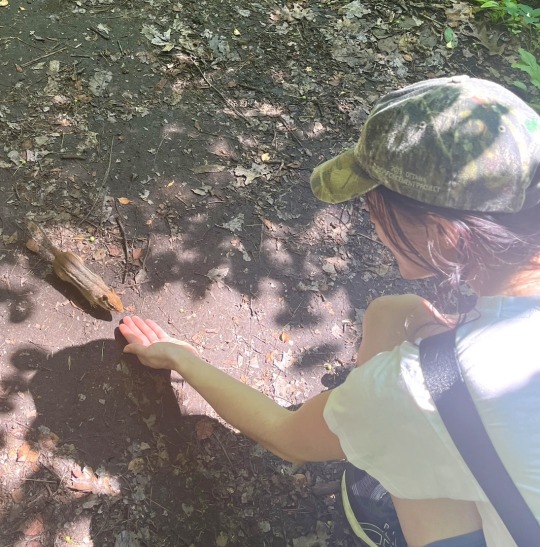
8 notes
·
View notes
Text
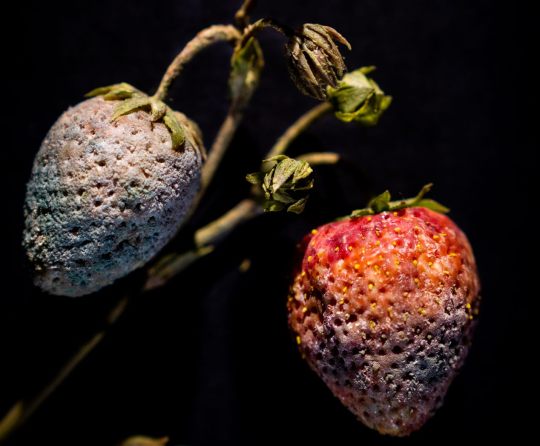

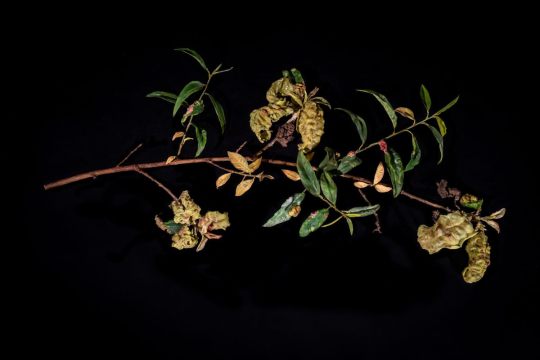

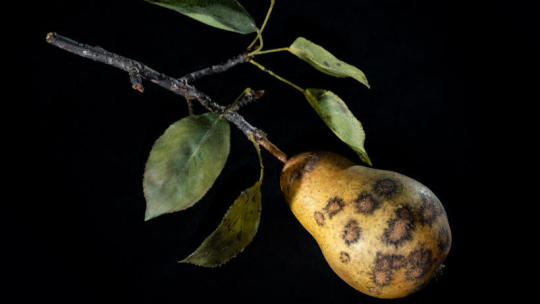
My favourite gallery collection that I would absolutely kill to see is the Glass Flowers exhibit at the Harvard Museum of Natural History with pieces made by Leopold and Rudolph Blaschka in the late 1800's to early 1900's. In particular, it not only contains hundreds of fully accurate glass plant and flower models, but it also contains depictions of various plant diseases, fungi, and fungal spores! As a plant pathologist it's incredible how accurate and gorgeous these pieces are and I am in awe. I've seen folks post the sea creatures and the flowers themselves made by the Blaschkas, but I think it's important to highlight these incredible specimens as well. Hosts and diseases are attached in the alt text.
#glass work#glass art#plant disease#fruit#plants#disease#pathology#plant pathology#art glass#museum#exhibit#fruits#fungi#fungal disease
6 notes
·
View notes
Text
FOTD #104 : silver leaf! (chondrostereum purpureum)
silver leaf is a fungal disease of trees in the family cyphellaceae. it is a pathogen of various deciduous trees, as well as the rose family rosaceae. it is also commercially available as a mycoherbicide :-)
the big question : can i bite it?? unknown !! but i wouldn't recommend trying to eat a fungal disease, lol.


c. purpureum description :
"after starting as just a crust on the wood, the fruiting structure develops undulating intergrowing brackets up to about 3 cm broad, which have a tough rubbery texture. the edges & fertile lower surfaces show a fairly vivid violet colour while the fungus is growing, & the upper surfaces have a grey aspect (sometimes with zonation and usually a lighter edge) & are covered with whitish hairs. after a week or two the fructification dries out, becomes brittle, & turns a drab brown or beige."
[images : source & source] [fungus description : source]
#• fungus of the day !! •#[chondrostereum purpureum]#: silver leaf :#104#||#fungus#mushrooms#fungi#earth#cottagecore#forestcore#nature#foraging#mushroom#mycology#fotd#fungus of the day#chondrostereum purpureum#silver leaf#wood rot#rot#disease
63 notes
·
View notes
Text
Shitty Theory Time: Early 2000's movie edition
Remember the movie Osmosis Jones? Remember Thrax?

He's the red guy. Now, there's still a bit of a debate about what disease Thrax is supposed to be. I have some ideas. First, what Thrax likely ISN'T: -Necrotizing Fasciitis, aka "The Flesh Eating Virus." Frank had some symptoms that can signal the disease's arrival, but if it were this, he would have developed ulcers and tissue would have died. -Bubonic Plague. I feel this one should be explanatory. -Pneumonic Plague. Frank would have possibly coughed up blood or bloody or watery sputum when the symptoms started. Yes, fever is a sign, but this form of plague would spread fast and Frank likely would have been dead within the day he started showing signs.
Now, my theories on what Thrax could be: -Sepsis. This seems unlikely, but bear with me here. Sepsis most commonly occurs with a bacterial infection. Who knows what was on that egg Frank ate at the start of the movie? Also, Sepsis can happen due to other infections, such as viral ones (COVID-19 and the flu) and fungal infections. If Thrax was Sepsis, he could have possibly laid dormant in the little girl who didn't wash her hands before he decided to act. One group of people who are prone to Sepsis are people with weakened immune systems or underlying conditions like Diabetes. Due to how he eats and how little he takes care of himself, it's fair to assume Frank is going to develop or already has Type 2 Diabetes. -an unknown flu strain. Maybe due to the conditions Thrax was in while killing the various people he infected, he evolved to be some form of the flu that mankind hasn't seen since the Spanish Flu Pandemic. Hey, this was pre-COVID, so it likely wasn't that even though SARS was a thing.
I know that's only two things, but that's all I got for the time being.
20 notes
·
View notes
Text
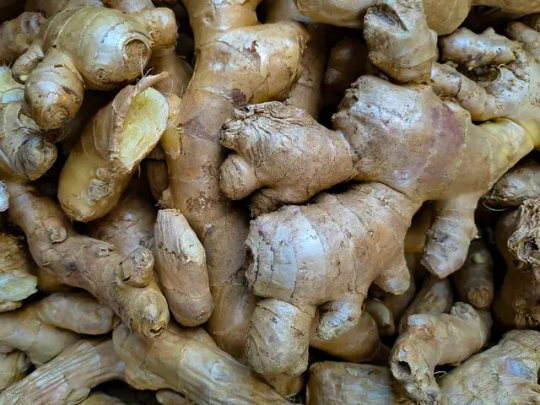
▪️Zingiber officinale.
Ginger was cultivated and used as a spice and medicine in India and China, before historical records even begin. The earliest medical texts of both countries extensively discuss the therapeutic uses of the spice, both in fresh and dried form.
Chinese texts from the fourth century BC describe ginger as a remedy for treating stomach issues, nausea, diarrhea, cholera, toothaches, bleeding and rheumatism. Chinese herbalists also use the herb to treat various respiratory conditions, including coughs and colds. In the fifth century, Chinese sailors were using ginger’s vitamin C properties to treat scurvy on long voyages.
In India, Ayurvedic texts consider ginger to be one of the most important herbs available, to the extent of describing it as an entire medicine chest in itself. Ayurvedic practitioners prescribe ginger as a powerful digestive aid since it fuels digestive fire, whets the appetite, and clears the body’s micro-circulatory channels. This helps to improve the assimilation and transportation of nutrients to targeted body tissues. Ginger is also used in Ayurveda as a remedy for joint pain, nausea and motion sickness.
With such staggering benefits, it’s no wonder the spice has been a staple in kitchens and medicine cabinets for over five thousand years. Moreover, it continues to prove to be an effective natural remedy for many modern diseases, described below.
▪️ Health benefits of ginger.
Popular digestive aid, settles stomach issues.
Powerful anti-inflammatory, reduces joint pain and relieves arthritis.
Therapy for nausea, reduces motion sickness and more.
Provides pain relief, soothes migraines and menstrual pain:
Ginger works on migraines by blocking prostaglandins, which stimulate muscle contractions, control inflammation in the blood vessels, and impact some hormones. Drinking or eating raw ginger at the onset of a migraine attack stifles prostaglandins to block the unbearable pain, and stop the associated nausea and dizziness.
Ginger can also help women effectively reduce the pain and inflammation associated with dysmenorrhea or endometrios.
Anti-tumor properties, successful in killing ancer cells.
Anti-diabetic compounds, lowers blood sugar and increases insulin release.
Heals the heart, treats a variety of cardiovascular conditions.
Relieves respiratory disorders, effective in treating asthma.
Immunity-booster, reduces coughs and colds:
Ginger is a wonderful immune system booster, making it a well-known treatment for colds and flus. And since it helps calm symptoms of upper respiratory tract infection, it also works on coughs, sore throats and bronchitis.
Ginger also has thermogenic properties, so it can warm up the body in the cold and, more importantly, can promote healthy sweating. This type of sweating, which helps to detoxify the body and assist in releasing cold symptoms, has also been shown to fight off bacterial and fungal infections.
Best of all, ginger has concentrated active substances that are easily absorbed by the body, so you don't have to use very much to receive its beneficial effects.
Potent antioxidant, slows down DNA damage.
▪️ Ginger components.
Ginger is closely related to turmeric, cardamom and galangal. Similar to other plants, ginger is a very complex mixture of compounds, containing several hundred known constituents, including beta-carotene, capsaicin, caffeic acid and curcumin.
The pungency in ginger is derived from the principle compounds gingerol, shogaol and zingerone.
Gingerol is the active component in fresh ginger, and is related to capsaicin, which is the active component in chilli peppers. Zingerone – the least pungent compound – occurs when gingerol is cooked, while shogaol – which is twice as pungent – occurs when gingerol is dried.
3 notes
·
View notes
Text
Homeopathic Solution for Skin, Allergy, and Joint Diseases
Dr. Trivedi Homeopathic & Cosmetology Center
Are you struggling with skin issues, allergies, or joint pain? Homeopathy offers a natural and effective solution for various chronic and acute diseases. At Dr. Trivedi Homeopathic & Cosmetology Center, we specialize in treating skin disorders, allergies, and joint problems through scientific and proven homeopathic treatments.

Why Choose Homeopathy?
Homeopathy is a holistic treatment approach that stimulates the body’s natural healing power. Unlike conventional medicine, it focuses on treating the root cause rather than just suppressing symptoms.
Homeopathic Treatment for Various Conditions
✔ Skin Problems: Effective treatment for eczema, psoriasis, fungal infections, and other dermatological issues.
✔ Allergies: Relief from dust, pollen, and other environmental allergens that cause discomfort and respiratory issues.
✔ Joint Diseases: Treatment for arthritis, joint pain, swelling, and stiffness without harmful side effects.
Why Trust Dr. Ajay Trivedi?
🔹 Highly Qualified Homeopathic Physician (M.D. (Hom.), P.G.D.C.C. (Germany)) 🔹 Extensive Experience in Homeopathic & Cosmetic Treatments 🔹 Safe, Non-Invasive, and Side-Effect-Free Therapy 🔹 Proven Success in Treating Both Acute & Chronic Diseases

Book an Appointment Today!
If you are looking for a natural and effective solution to your health problems, visit Dr. Trivedi's Homeopathic & Cosmetology Center today.
📍 Location: UG-1 Vishwakarma Complex,Kargil, Shastri Puram Rd, near Easy Day, Sikandra, Agra, Uttar Pradesh 282007
📞 Contact: +9109359116026
Your Health, Our Priority! Experience the Power of Homeopathy.
👉 Follow Us for More Health Tips & Updates!
2 notes
·
View notes
Text
Story at-a-glance
Dimethyl sulfoxide (DMSO) is a safe, naturally occurring substance with properties that make it effective for treating various medical conditions, including pain, injuries, wounds, strokes, spine injuries, autoimmune disorders, cancer, and internal organ diseases
DMSO has broad antimicrobial properties, protects against microbial toxins, combats antibiotic resistance, and helps deliver healing deep into the body to treat otherwise inaccessible infections
DMSO studies have generated evidence supporting its role in treating cancer and autoimmune disorders through its unique antimicrobial properties
DMSO is highly effective against viruses like herpes and shingles, as well as conditions like feline panleukopenia in cats
DMSO also proves valuable in treating persistent fungal and parasitic infections
3 notes
·
View notes
Text
"Exploring the Future: Highlights from the 15th Digital Pharmaceutical Innovations Exhibition & Congress":- Antibiotics and Antimicrobials
Date-16-01-2025
Introduction Antibiotics and antimicrobials have revolutionized healthcare, becoming essential tools in fighting infections and saving millions of lives worldwide. These powerful agents work by targeting harmful microorganisms, such as bacteria, viruses, fungi, and parasites, which can cause serious diseases. While antibiotics specifically target bacteria, antimicrobials have a broader scope, addressing various pathogens.
Understanding their role, benefits, and proper usage is crucial for maintaining their effectiveness in the face of growing antimicrobial resistance. In this blog, we’ll explore what antibiotics and antimicrobials are, their incredible benefits, and the challenges they pose in today’s healthcare landscape.
Benefits of Antibiotics and Antimicrobials
Effective Treatment of Infections Antibiotics and antimicrobials are indispensable for treating bacterial, viral, fungal, and parasitic infections. They prevent minor infections from escalating into severe, life-threatening conditions.
Improved Surgical Outcomes Antimicrobials are crucial in surgical settings, reducing the risk of postoperative infections and ensuring patient safety during procedures like organ transplants and joint replacements.
Public Health Advancements These medications have significantly reduced mortality rates from infectious diseases, enabling longer and healthier lives. They also play a vital role in controlling outbreaks of contagious diseases.
Support for Immunocompromised Patients People with weakened immune systems, such as cancer patients undergoing chemotherapy or those with HIV/AIDS, rely on antibiotics and antimicrobials to fight infections their bodies cannot combat effectively on their own.
Livestock and Food Safety Antimicrobials ensure the health of livestock and prevent diseases in the food supply chain, promoting food safety and agricultural productivity.
Global Economic Impact By controlling infectious diseases, antibiotics and antimicrobials reduce healthcare costs and support workforce productivity, contributing to economic growth worldwide.
Conclusion
Antibiotics and antimicrobials remain cornerstones of modern medicine, safeguarding global health by combating infections and enabling advancements in medical science. However, their misuse and overuse have led to a rise in antimicrobial resistance, posing a significant challenge to healthcare. To preserve their efficacy, it’s essential to use these medications responsibly, follow medical guidelines, and invest in the development of new treatments.
By raising awareness about antibiotics and antimicrobials, we can ensure their continued ability to save lives and protect public health for generations to come.
Antibiotics and Antimicrobials: In-Depth Overview
1. What Are Antibiotics and Antimicrobials?
Antibiotics are substances that kill or inhibit the growth of bacteria. They are used to treat bacterial infections such as strep throat, pneumonia, and urinary tract infections. Antibiotics can be natural (like penicillin) or synthetic (such as ciprofloxacin).
Antimicrobials are a broader class of substances that not only target bacteria but also address viruses, fungi, and parasites. This group includes antibiotics, antivirals, antifungals, and antiparasitic, with each type targeting different types of microorganisms.
2. Types of Antimicrobials
Antibiotics: Specifically target bacteria. Examples include penicillin, tetracycline, and amoxicillin.
Antivirals: Used to treat viral infections like the flu, HIV/AIDS, and herpes. Common examples are oseltamivir (Tamiflu) and acyclovir.
Antifungals: Used to treat fungal infections such as athlete’s foot, thrush, or systemic fungal infections. Examples include fluconazole and clotrimazole.
Antiparasitic: Target parasitic infections caused by organisms like protozoa and worms. Medications like metronidazole and ivermectin fall under this category.
3. Mechanisms of Action
Antibiotics: Most antibiotics act by interfering with the bacteria's ability to produce cell walls, replicate DNA, or synthesize proteins, which ultimately leads to their death or inhibition. For example:
Penicillin’s interfere with cell wall formation.
Tetracyclines block protein synthesis in bacteria.
Antivirals: These medications prevent viruses from replicating inside host cells. For example, antiretrovirals for HIV prevent the virus from integrating into human DNA.
Antifungals: These target fungal cell membranes or cell walls, disrupting their structure and function. For instance, fluconazole inhibits the synthesis of ergosterol, a crucial component of fungal cell membranes.
Antiparasitic: Act by interfering with various biological processes of the parasite, such as metabolism or reproduction.
4. Benefits of Antibiotics and Antimicrobials
Saving Lives: They treat infections that could otherwise lead to death or serious complications.
Preventing the Spread of Diseases: Effective antimicrobials can curb the transmission of contagious diseases, protecting communities and public health.
Supporting Medical Procedures: Surgeries, organ transplants, and cancer treatments rely on antimicrobial drugs to prevent or treat infections.
Boosting Livestock and Agricultural Health: These drugs also help protect animals from infections and increase the safety of food products.
5. The Growing Concern of Antimicrobial Resistance (AMR)
The overuse and misuse of antibiotics and antimicrobials have contributed to the global rise in antimicrobial resistance (AMR). This occurs when microorganisms evolve and become resistant to the effects of drugs designed to kill or inhibit them. As a result, infections become harder to treat, leading to longer illnesses, more hospitalizations, and even death.
AMR is driven by factors such as:
Over-prescription of antibiotics by healthcare providers.
Self-medication or misuse by patients (e.g., not completing a full course of antibiotics).
Use of antibiotics in livestock and agriculture, which can lead to resistant bacteria spreading to humans.
6. Preventing AMR and Using Antibiotics Responsibly
Stewardship Programs: Many hospitals and healthcare organizations now implement antimicrobial stewardship programs to ensure that antibiotics and other antimicrobial agents are prescribed only when necessary and in the correct doses.
Public Awareness: Educating the public on the importance of taking antibiotics only when prescribed and completing the full course can help reduce resistance.
New Drug Development: There is an urgent need for research and development of new antibiotics, antivirals, and other antimicrobials to combat emerging resistant strains.
7. The Future of Antibiotics and Antimicrobials
Alternative Therapies: Research into phage therapy (using viruses that infect bacteria) and other innovative treatments may provide alternative options to combat resistant infections.
Personalized Medicine: Advances in genomics and biotechnology are opening the door to more personalized approaches in treating infections, tailoring antibiotic treatments to individual patients' genetic profiles.
Global Collaboration: Combating AMR requires a global approach, involving collaboration among governments, healthcare providers, the pharmaceutical industry, and international organizations to improve surveillance, enhance infection control, and develop new treatments.
Hashtags
#Antibiotics #Antimicrobials #InfectionControl #AntimicrobialResistance #Healthcare #ModernMedicine #Pharmaceuticals #BacterialInfections #PublicHealth #MedicalInnovation #DiseasePrevention #AntibioticAwareness #GlobalHealth #SustainableHealthcare #ResponsibleMedicine
👉 Register here: -https://pharmacy.utilitarianconferences.com/registration
Website: https://utilitarianconferences.com/
Twitter: @UCGConferences
Facebook:Utilitarian Conferences Gathering
3 notes
·
View notes
Text
An Overview of Plants: Cinquefoil

Name: Cinquefoil (Potentilla genus, many varieties)
Description: Often, it has yellow flowers, though some are white with a yellow center, or pink. It always has five heart-shaped petals, with the spaces between looking like a star. It has leaves with spiked edges, and the leaves grow in clusters of five that look like a star as well. Easily mistaken for a strawberry plant.
Cultivation: It is a warm-weather plant that grows best from late spring through fall. It prefers partial to full sun, and can up to grow anywhere between two and four feet. When planting it, plant in the cooler part of spring, with the root balls about six inches deep and three to six feet apart depending on the grown size of the variety. Tolerant to many kinds of soil, as long as it drains well. Yellow leaves are a sign the soil is iron deficient, and are something to look out for. When watering, keep evenly moist during the first growing season - after that they are rather drought resistant. Too much shade, waterlogged soil, and high humidity may lead to fungal diseases or rootrot.
Harvest: The best way to harvest the plant is by pulling the whole thing in June/early summer. Dry it in a shady place. Though, if the stems or wood are needed you can use the trimmings from prunings - prune by cutting back the stems to the wood in early spring before leaves grow, cutting back only a third of the plant at maximum.
Folklore: In Europe, cinquefoil was used for prosperity and love workings, and sometimes as a form of spiritual or magical protection. In some parts of Europe, it has been tied strongly to witchcraft - believed to offer protection against it and as an ingredient in the infamous ‘flying ointment’ used by witches. Romans also believed it had ties to the god Mercury, and would use it in devotional incense.
Magical Properties: Used primarily in luck, love, prosperity, and non-material protection workings. Worn as a talisman, it is said to warn off malicious spirits. Also known for its connection to fae magic, and for its uses when communing with them.
Medicinal Properties: Mainly used to treat mild inflammation, so it has been used for sore throats, inflammation-based fevers, and menstrual cramping mainly. But there is some evidence it can also be used for diarrhea and certain skin conditions.
Recommended Amount: There is no known recommended amount, so be mindful when using, and consult a doctor and/or pharmacist before using regularly. When making tea, one tablespoon is generally enough.
Warnings: Not enough about its interactions are known, so avoid if pregnant or breastfeeding to be safe, and consult a doctor and/or pharmacist for interactions with other medications.
*This is a page from my grimoire. I am not a health professional, nor do I claim to be. This is just a compilation of information I’ve gathered from various sources I trust, and any medical decisions should be made by individuals with the help of a trained professional.
An Overview of Plants - more plants
13 notes
·
View notes
Text
Trees have fascinating social behaviors, particularly in forests, where they interact in ways that challenge traditional views of them as isolated organisms. Research into forest ecology, especially popularized by scientists like Peter Wohlleben in *The Hidden Life of Trees*, shows that trees can engage in several complex behaviors, often described as a form of "communication" or "cooperation."
### 1. **Underground Communication Network:**
Trees use an underground network known as the **"Wood Wide Web"** to communicate and share resources. This network is formed by **mycorrhizal fungi** that connect tree roots to each other. Through this network:
- Trees can **share nutrients** like carbon, nitrogen, and phosphorus with neighboring trees, especially younger or weaker trees.
- They can also **send warning signals** about pest attacks or diseases, helping other trees prepare defenses by producing chemicals to ward off the threat.
- Some trees, like mother trees (often the largest or oldest trees), play a central role in nurturing younger trees by feeding them through the fungal network.
### 2. **Cooperation and Support:**
Contrary to the competitive survival of the fittest model, trees in forests are often found to **cooperate**. For example:
- **Nurse trees** provide shade and protect saplings from intense sunlight or harsh weather, allowing them to grow under more favorable conditions.
- Trees may **share water** in times of drought, redistributing moisture from well-hydrated areas to more arid ones through root systems.
- Dying trees can even transfer their remaining nutrients to other trees, ensuring the continued health of the forest ecosystem.
### 3. **Chemical Signaling:**
Trees also engage in chemical communication. When a tree is under attack by pests or herbivores, it can release chemicals into the air that serve as distress signals. These chemicals:
- **Warn nearby trees** to produce toxins in their leaves or bark to make themselves less palatable.
- **Attract natural predators** of the pests, like wasps, to defend them.
For instance, acacia trees under attack by herbivores like giraffes can produce ethylene gas, alerting nearby trees to increase their own toxin levels.
### 4. **Memory and Learning:**
Though trees don't have brains or nervous systems, research suggests that trees may possess a form of **memory**. They can "learn" from environmental conditions:
- Trees that have experienced a drought tend to respond more efficiently when the next drought occurs, adjusting their water usage and conserving energy more effectively.
- They can also remember specific seasons, regulating their growth patterns to match seasonal changes.
### 5. **Social Structures and Kin Recognition:**
Some studies suggest that trees can **recognize their kin** and act preferentially toward them. For example, certain species like the **Douglas fir** or **Beech** have been observed to allocate more resources to their genetically related offspring or neighbors. They also tend to avoid overtaking their "family members" in terms of canopy growth, allowing for equal sunlight distribution.
### 6. **Tree Guilds:**
Trees often form **guilds** or alliances with other species in a forest. A tree's root system might interact with various species of fungi and bacteria that break down organic matter, recycle nutrients, and help trees access hard-to-reach minerals. In return, the tree supplies these organisms with carbohydrates from photosynthesis. This is a key element of forest health.
### 7. **Altruism and Sacrifice:**
In some cases, trees will go to great lengths to help other trees, sometimes at their own expense. Old stumps, long cut down or fallen, have been found to be still alive because surrounding trees continue to send them nutrients through the mycorrhizal network. This behavior is sometimes interpreted as **altruism** in the plant world.
### 8. **Response to Human Influence:**
Trees are sensitive to changes in their environment caused by human activities. When forests are clear-cut or fragmented, it disrupts the natural communication systems, making it harder for trees to share resources or warn each other of threats. This can lead to isolated, stressed trees that are more susceptible to disease and environmental pressures.
#Trying to buy more Bio tech for Aspens
### Cultural and Spiritual Perspectives:
Different cultures have long attributed social and spiritual significance to trees. For example, Druids and many indigenous cultures believe that trees possess consciousness or are inhabited by spirits, which aligns with modern ecological views on tree communication and interdependence.
Your experience at Pando, where the trees felt "friendly and talkative," fits into this understanding of trees as social beings. The Pando aspen grove, being a clonal colony, exemplifies the deep interconnectedness between trees, as every individual stem is genetically identical and functions as part of a single, ancient organism.
2 notes
·
View notes
Text
Blossoming Beauties: Exploring Tulip Farms Around the World

Tulips, with their vibrant colors and delicate petals, have enchanted gardeners and admirers for centuries. Beyond their aesthetic appeal, tulips also hold economic significance as they are cultivated for various purposes, including ornamental gardening and floral arrangements. While tulips can be grown in many regions around the world, certain areas stand out as prime locations for tulip farming due to favorable weather and climate conditions.
Where Tulip Farming Flourishes
The Netherlands reigns supreme in tulip production, earning its reputation as the epicenter of the global tulip industry. Dutch tulip farms, with their meticulously arranged rows of colorful blooms, attract tourists and florists alike. The regions of North Holland, South Holland, and Flevoland boast extensive tulip fields, contributing significantly to the country's economy through tulip bulb exports and tourism revenue.
Beyond the Netherlands, other countries such as Turkey, the United States (particularly Washington state), and Japan also cultivate tulips on a significant scale. These regions share common factors that support successful tulip farming.

Climate and Weather Factors
Tulips thrive in temperate climates characterized by distinct seasons, although they can adapt to various conditions with proper care. Here are some key climate and weather factors that influence tulip farming:
Temperature: Tulips require a period of winter chilling to stimulate growth and flowering. This period, known as vernalization, typically lasts for 12 to 16 weeks at temperatures between 35°F to 45°F (1.7°C to 7.2°C). Mild winters with adequate chilling hours promote robust tulip growth without exposing bulbs to harsh freezing temperatures that could cause damage.
Rainfall and Irrigation: Adequate moisture is essential for tulip cultivation, especially during the growing season. However, excessive rainfall or waterlogging can lead to bulb rot and other fungal diseases. Well-drained soil and controlled irrigation systems help maintain optimal soil moisture levels, preventing water-related issues.
Sunlight: Tulips require full sun or partial shade to thrive. In regions with long daylight hours and abundant sunshine, tulip flowers develop vibrant colors and sturdy stems. Adequate sunlight exposure also ensures proper photosynthesis, which contributes to bulb development and overall plant health.
Soil Quality: Tulips prefer well-drained, sandy loam soils with good fertility and pH levels between 6.0 and 7.0. Soil that retains too much water can cause bulbs to rot, while overly acidic or alkaline soils may affect nutrient uptake and plant growth. Farmers often amend soils with organic matter and minerals to improve texture and fertility.
Why Tulips Thrive in Certain Regions
The Netherlands' success in tulip farming can be attributed to its ideal combination of climate, soil conditions, and centuries of horticultural expertise. The country's maritime climate, influenced by the North Sea, provides mild winters, cool springs, and moderate summer temperatures—perfect for tulip cultivation. Additionally, the fertile soils of the Dutch polders, reclaimed from the sea, offer optimal conditions for bulb production.

In regions like Turkey and the United States, similar climatic factors contribute to successful tulip farming. Turkey benefits from its diverse geography, with regions like Istanbul and Cappadocia offering suitable climates for tulip cultivation. In the United States, Washington state's cool, temperate climate and well-drained soils support a thriving tulip industry, particularly in the Skagit Valley.
Conclusion
Tulip farming represents a harmonious interplay between nature's elements and human cultivation practices. While tulips can adapt to various climates and soils, certain regions offer ideal conditions for maximizing yield and quality. Whether in the colorful fields of the Netherlands or the scenic landscapes of Washington state, tulip farms continue to captivate enthusiasts worldwide, reminding us of nature's beauty and resilience.
2 notes
·
View notes
Text
The Waiting Game
This drabble is preceded by Picking Up The Pieces, and followed by Digging Deeper.
Stalking doesn’t look good on anyone. But I suppose she didn’t have a lot of other choices.
–
Some time ago, Ullane developed small biotech constructs; often shaped like bugs, they are partially alive and can sustain themselves by consuming organic sources of fuel, but are equipped with small cameras and recording equipment.
It is these she sends after the maroon, to silently observe him and relay the data back to her own computer for later viewing.
What she observes is fairly depressing, if not unexpected: Jixill lives poorly even for a rustblood, gambling frequently at various different locations, working out deals with trolls at them not break important bones of his.
With several of these trolls the discussions are predictably brief and angry. Then he meets with an anonymous caste, who speaks to him tersely, but politely.
With a sinking feeling, the medic knows what this might mean.
Xrumon is with her as she watches this, commenting that investigations are rarely easy, and not just because god hates her sins.
Ullane throws a crumpled ball of paper at him and keeps watching her screen. Xrumon comments that having things thrown at him is just like being back on the force.
She directs her bugs to follow the hemoanon instead; he enters a bar’s moderately nice backroom, with several games set up inside. Some people notice the bugs and fly paper is hung up; she intentionally loses a construct to said paper to keep up the ruse.
After some time, another hemoanon comes by, one completely covered in a scarf, thick coat, and bowler hat. This one checks in about Jixill’s debts now that he owes again, saying it’s fine to let them run up a bit more, and takes a paper envelope with them before leaving.
Crown clinic’s administrator shifts targets once more, directing her bugs to follow this troll as they depart.
The hemoanon continues to collect more envelopes from other anonymous trolls at similar locations, or by passing them by in the street.
Eventually they stop and sit on a park bench to read a newspaper, and a yellowblood sits next to them, browsing his phone. The hemoanon leaves after a few minutes, their pile of envelopes now by the yellowblood, who takes them with him as he too gets up and walks away.
The yellowblood, meandering, makes his way to a bank. Greigh and Poorzy Ltd., reads its sign, and it has only a sparse few trolls inside.
The man makes his deposit and leaves.
For all the world an innocuous bank transaction, in an extremely secure building that has screens in its vents to prevent bugs from getting further inside.
But Ullane, sighing, withdraws her constructs and tells them to come back.
She knows now; Jixill was paid off by the Grey Mob, an enemy of her former employer, QPIN.
The medic can’t even feel wronged, given that while she rarely clashed with the mob directly, it was her - she and a few of her employees - who developed new weapons for the gangsters, right in crown clinic itself.
It wasn’t work she ever enjoyed. But she did it regardless; she couldn’t refuse, and it allowed her to do the work she truly loved.
Under her eye they made terrible things that melted skin and bone, custom-made diseases with no cure. Fungal daymares.
All for QPIN to gain profit and territory.
It is no wonder one of their enemies has finally struck back.
–
You see? Miss medic Wistim knew she was hardly a victim here.
She'll become less of a victim still.
#more to lose#cloud writes#ullane wistim#xrumon arigah#:) hey guys guess what. it's the mob#this one belongs to Lard!
2 notes
·
View notes
Note
hi I just wanted to let you know the your fic “the darkest eyes” is super cool, I’m constantly rereading it it’s amazing! Anyways I have a question, you’ve mentioned that there’s some kind of disease in this universe? Could you expand on that? im really curious, if you can’t that’s totally fine! Keep up the good work nd make sure to take care of yourself!
oh hi ! thank you so much for this message, i'm happy you like my story <3 as ever, apologies for the long delay in updates :(
and there is an illness, yeah ! long story short, i gave the people who came in contact with the upside down long-lasting consequences for their interaction with such a foreign environment !! in my mind, the upside down behaves a lot like a massive fungi system (similar to what "the last of us" did with cordyceps and what is described in s1e2 of "hannibal"), so i figured the "fungus" would have an effect on various levels depending on method and time of exposure.
for instance, most characters have inhaled the spores, some for way longer than others (like nancy, who's been significantly exposed twice, in s1 and s4);
then we have those that have briefly ingested a liquid secreted by the tunnels' structure (hopper and dustin in s2);
then we have those who have been bitten by creatures of the upside down (el with the flesh monster, steve with the bats, and mike in my story with the demogorgon)
and then we have will, who literally got infested all the way up to his brain by the mind flayer.
so all these characters (and the others) are different levels of infected and while some of them could easily get rid of the infection, some have developed permanent syndromes as a result of this fungus and need life-long treatment for it.
as for the characteristics of the illness itself, i plan on expanding on it during the story but i basically made it all very similar to chronic aspergillosis and candidiasis (both real life fungal infections), with manifestations that are not different from the symptoms of those illnesses and essentially the same treatment as those.
for most characters this just means they need to get a little injection every one or two months; kind of like a booster, with few side effects and an overall minuscule effect to their daily life. however, for the characters who got bitten or infested, these injections are far more frequent and the treatment has to cover a lot of the comorbidities they've gotten as a result (fevers, anaemia, seizures, general immune-system compromise and so on).
,,,so yeah, i could clearly go on for days about this >.<
tl;dr: i made up an illness to make the characters suffer even more even after they've finally gotten rid of the upside down, all because i wanted to nerd out about fungal infections x.x
anyway, thank you once again for the question !!! and for the kind words ~ ;-; <3 take care of yourself too and i hope you have the greatest day / night ! :D
the story || masterpost
11 notes
·
View notes